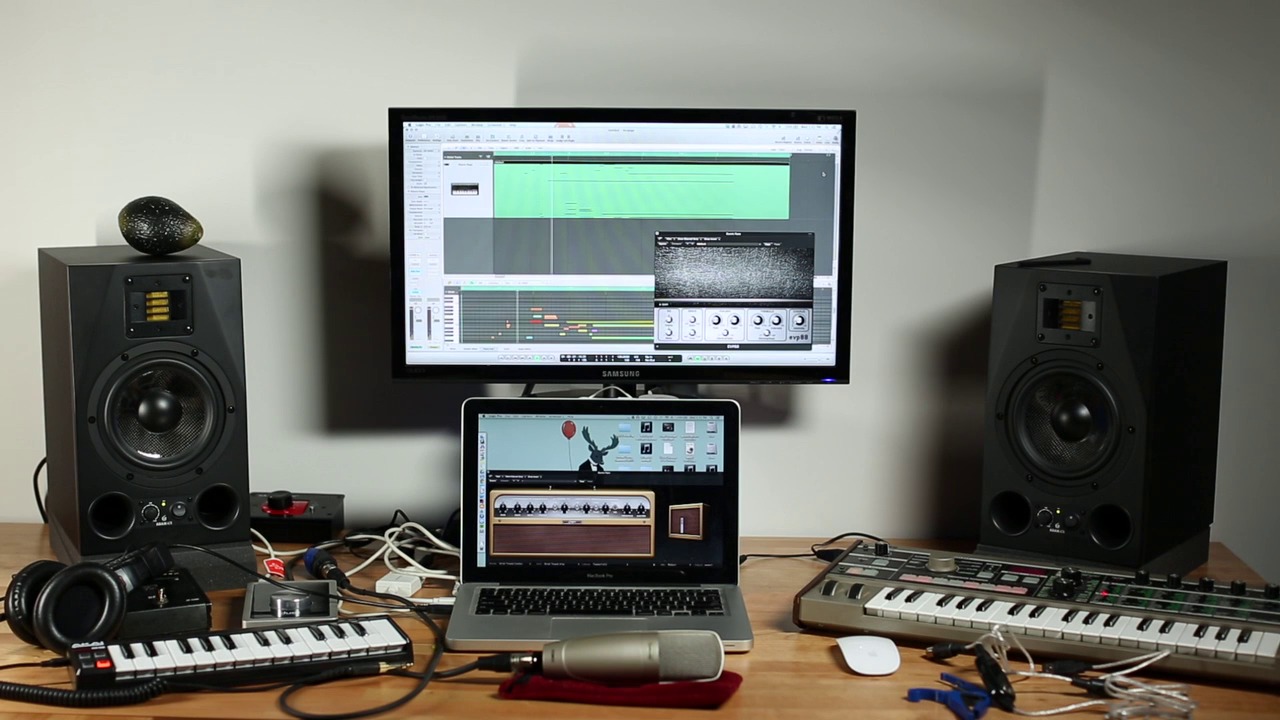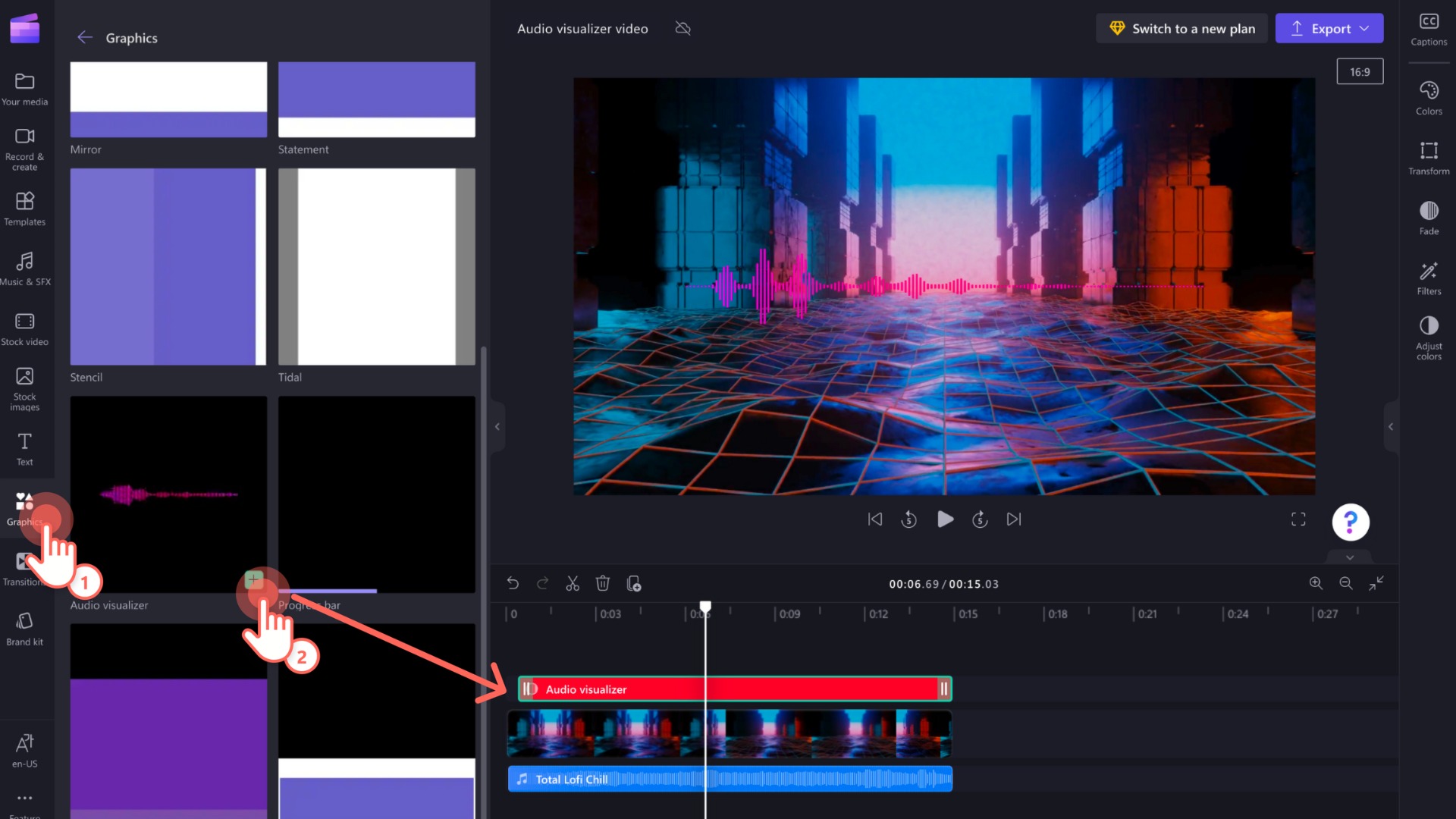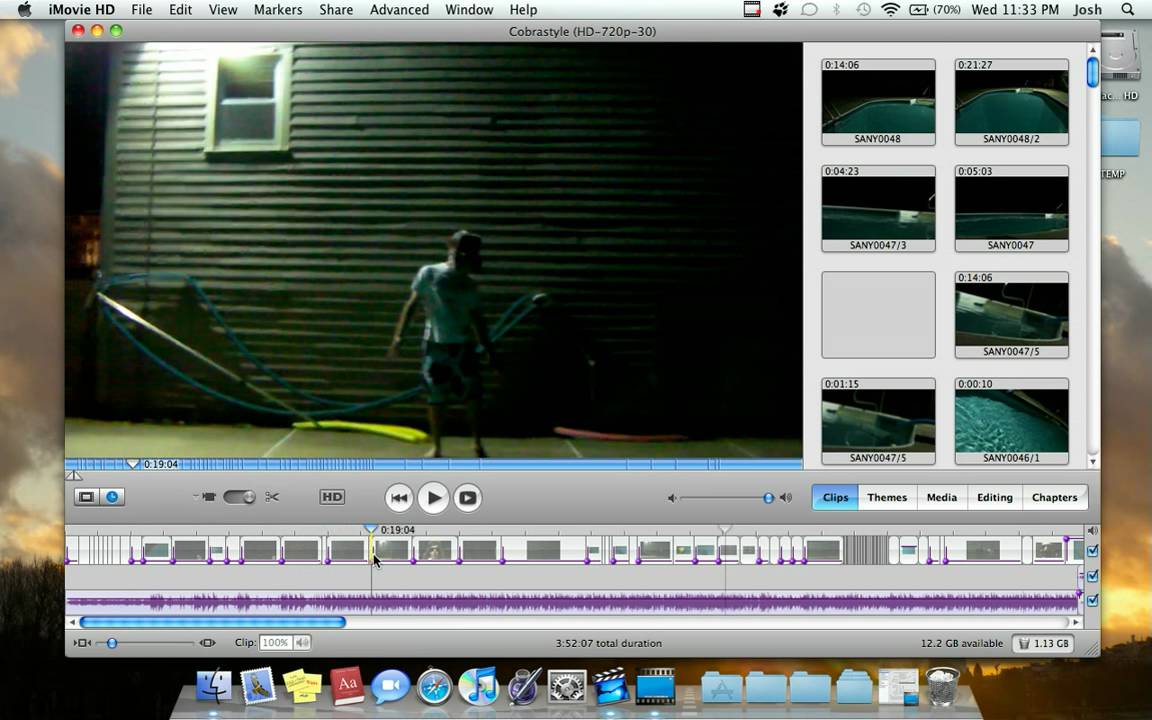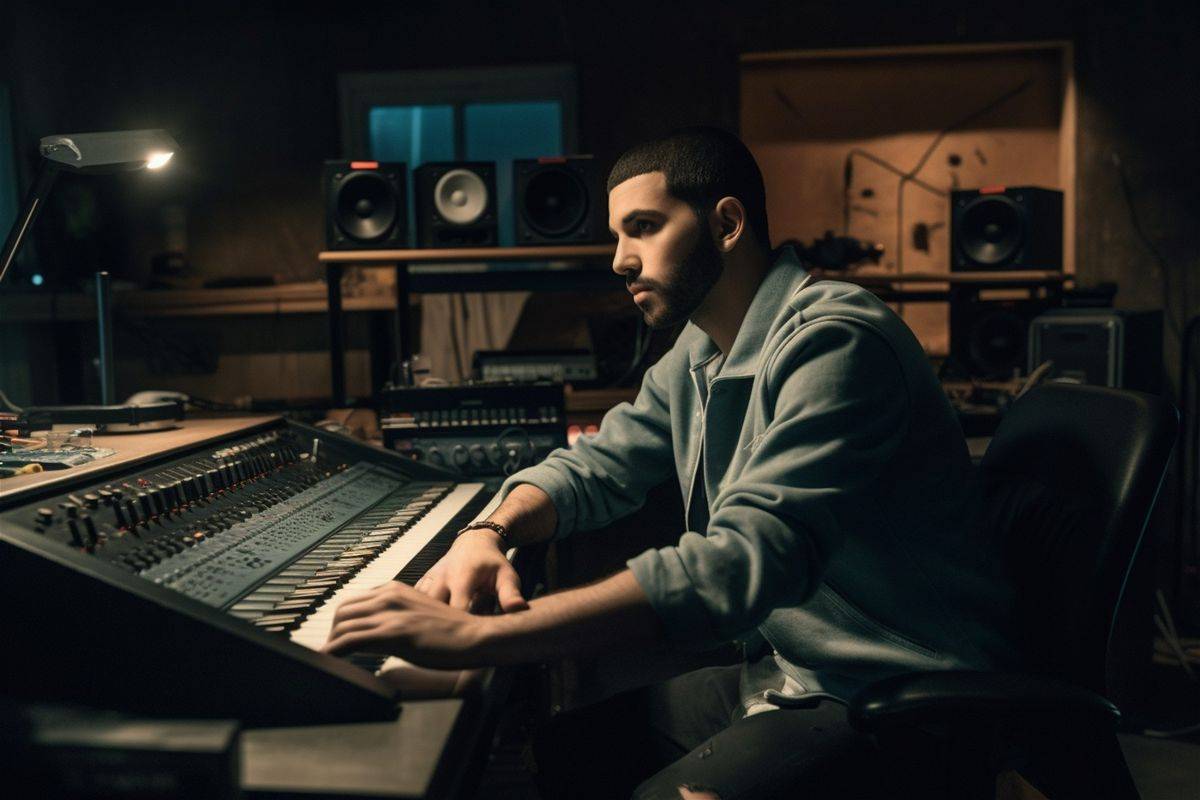Home>Production & Technology>Music Video>What Makes A Good Music Video
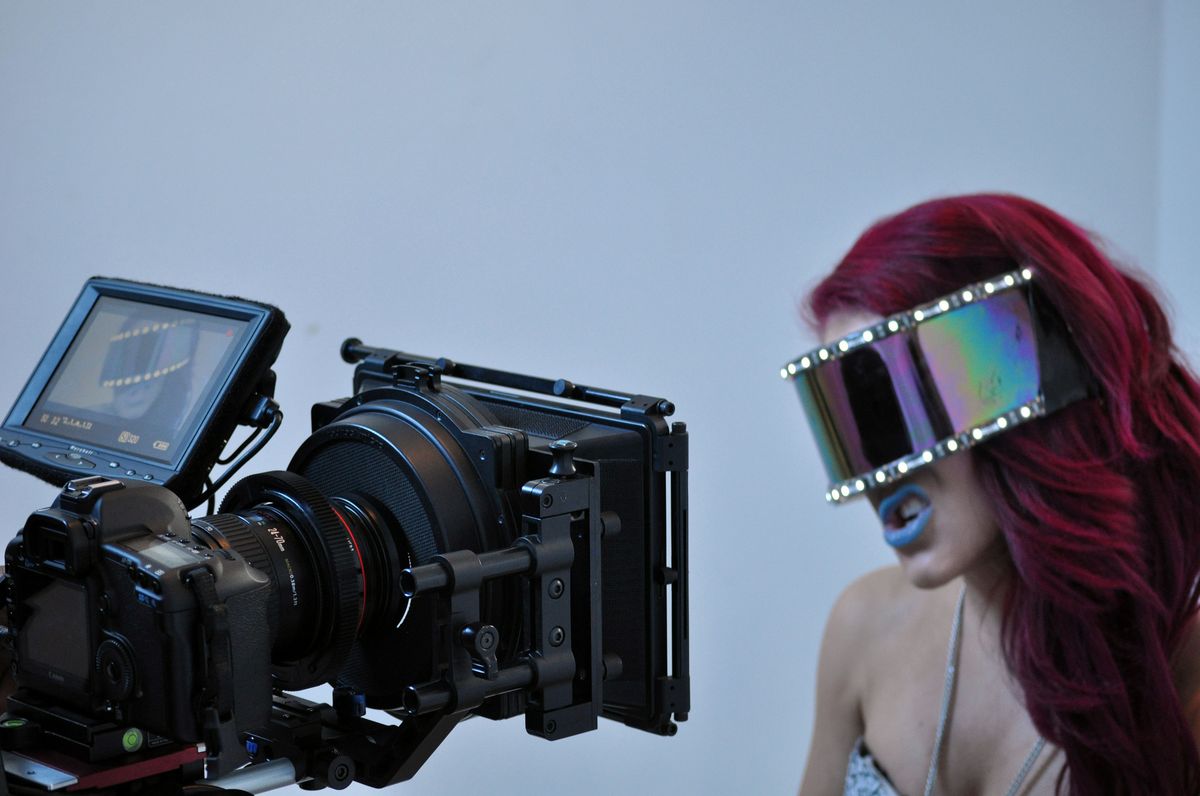

Music Video
What Makes A Good Music Video
Modified: January 22, 2024
Discover the key elements that make a good music video. Explore the importance of storytelling, visuals, and creativity in creating captivating music videos.
(Many of the links in this article redirect to a specific reviewed product. Your purchase of these products through affiliate links helps to generate commission for AudioLover.com, at no extra cost. Learn more)
Table of Contents
Introduction
In the digital age, music videos have become more than just a promotional tool for musicians; they have become an art form in their own right. A good music video has the power to captivate, inspire, and leave a lasting impression on viewers. It combines the elements of music, visual storytelling, and creative execution to create a unique and immersive experience for the audience.
Music videos have come a long way since their inception in the 1980s. With advancements in technology and the rise of streaming platforms like YouTube and Vevo, music videos have become more accessible and prevalent than ever before. They have become an integral part of a musician’s brand, contributing to their overall image and reputation.
The purpose of a music video is to enhance the listener’s experience of a song by adding visual elements that complement and amplify the emotions conveyed in the music. A well-crafted music video can evoke a range of emotions, from joy and excitement to sadness and contemplation.
But what makes a good music video? What sets it apart from the countless others that are released every day? In this article, we will delve into the key elements that contribute to the success of a music video, from visual storytelling and synchronization with the music to technical excellence and originality. We will explore how these factors combine to create a memorable and impactful viewing experience.
Whether you’re a fan of a particular artist or simply enjoy exploring the world of music videos, this article will provide valuable insights into the artistry and craftsmanship behind these visual masterpieces. So, let’s dive in and uncover the secrets of what makes a good music video.
Visual Storytelling
At the heart of every great music video lies the power of visual storytelling. A good music video should be able to convey a narrative or evoke certain emotions through its visuals, enhancing the listener’s connection to the song. It should take the viewer on a journey, creating a visual world that complements and enhances the music.
Visual storytelling in music videos can take various forms. It can be a literal representation of the song’s lyrics, where the visuals directly depict the story being told. Alternatively, it can be more abstract and interpretive, using symbolic imagery to convey deeper meanings and emotions.
An effective music video often establishes a clear concept or theme and develops it throughout the duration of the song. The visuals should have a logical progression, weaving a cohesive narrative or conveying a specific mood that aligns with the music and lyrics. This cohesion helps to engage the viewer and creates a more immersive experience.
For example, a music video for a love song might tell the story of a couple’s journey through various stages of their relationship, using visuals to capture the emotions of love, longing, and heartbreak. By using visual cues, such as colors, settings, and character interactions, the video can evoke a range of emotions that resonate with the viewer.
In addition to the narrative aspect, visual storytelling in music videos also involves the aesthetics and cinematography. The video should be visually pleasing, with well-composed shots, interesting angles, and visually striking elements. Creative and innovative camera techniques can further enhance the storytelling and add depth to the overall visual experience.
Furthermore, the art direction and production design play a crucial role in creating a compelling visual world. From the choice of locations and sets to the styling and costumes of the artists, every aspect should contribute to the overall vision and narrative of the music video.
Overall, visual storytelling is a key component of a good music video. It has the power to transport the viewer to another world, evoke emotions, and leave a lasting impression. By effectively combining visuals, narrative elements, cinematography, and art direction, a music video can transcend being a mere companion piece to a song and become a work of art in its own right.
Synchronization with Music
One of the fundamental elements that sets a good music video apart is its synchronization with the music. A well-choreographed and tightly synchronized video can elevate the impact of the song, creating a seamless blend of audio and visual elements.
The synchronization starts with the basics of matching the timing of the visuals with the beats and rhythm of the music. This can involve timed cuts, transitions, and movements that are precisely aligned with the musical structure. When the visuals align perfectly with the music, it creates a sense of harmony and enhances the viewer’s connection to the song.
Furthermore, a good music video goes beyond simple synchronization of beats. It takes into account the lyrics and melodies of the song and incorporates visual elements that mirror or complement them. This can be done through clever visual metaphors or by visually representing the emotions and themes conveyed in the lyrics.
For example, if the song has a driving and energetic chorus, the music video may feature fast-paced editing, dynamic camera movements, and intense performance visuals to amplify the energetic feel of the music. On the other hand, if the song has a melancholic and introspective verse, the video may adopt a more subdued visual style with slower pacing and introspective shots.
The synchronization between the music and visuals also extends to the choreography and performance aspects of the video. When an artist’s movements and gestures are in sync with the rhythm and flow of the music, it enhances the overall impact and creates a sense of unity between the artist, song, and visuals.
Additionally, creative sound design and audiovisual effects can enhance the synchronization between the music and visuals. This can include synchronized sound effects, visual elements that respond to the beat or melody, or even incorporating the sounds of the environment into the music video.
Ultimately, synchronization with the music is a crucial element of a good music video. It enhances the viewer’s experience by creating a cohesive and immersive audiovisual journey. When the music and visuals work together harmoniously, it elevates the impact of the song, leaving a lasting impression on the audience.
Creative Concept and Execution
A good music video stands out not only because of its technical excellence but also because of its creative concept and execution. The concept is the underlying idea or theme that drives the visual narrative and sets the video apart from others. The execution, on the other hand, refers to how well the concept is translated into the final product, including the visuals, aesthetics, and overall production value.
A strong creative concept is what grabs the viewer’s attention and makes the music video memorable. It should be innovative, unique, and aligned with the artist’s vision and brand. Whether it’s a literal interpretation of the lyrics or a more abstract representation of the song’s emotions, the concept should be well thought out and add a layer of depth to the overall viewing experience.
Once the concept is established, it’s crucial to execute it with precision and attention to detail. This involves careful planning and coordination of various elements such as location scouting, art direction, cinematography, choreography, and visual effects.
For instance, a music video with a concept centered around a futuristic dystopian theme would require meticulous attention to detail in set design, costume design, and visual effects to bring that vision to life. On the other hand, a video with a concept inspired by vintage aesthetics might require specific color grading and production design choices to create a cohesive and nostalgic feel.
Moreover, the creative execution of a music video also includes the performance of the artist. The way they portray their emotions, charisma, and unique style can greatly enhance the overall impact of the video. The artist’s presence and performance should be aligned with the concept and narrative, serving as a captivating focal point for the viewers.
Additionally, creative editing techniques and post-production enhancements are crucial in enhancing the visual and storytelling aspects of the video. This can include visual effects, color grading, and unique editing styles that elevate the overall quality and artistic expression of the music video.
In summary, a good music video relies on a creative concept and its flawless execution. It should have a unique and innovative concept that stands out and resonates with the viewers. The execution should be meticulous and detail-oriented, ensuring that every aspect of the video, from visuals to performances, aligns with the overall vision. When these elements come together seamlessly, it creates a music video that leaves a lasting impact and sets new standards in creativity and craftsmanship.
Cinematography and Editing
Cinematography and editing are two essential components that contribute to the visual storytelling and overall impact of a music video. These elements play a crucial role in capturing the mood, atmosphere, and aesthetics of the video, as well as enhancing the synchronization with the music.
Cinematography refers to the art of capturing the video through camera work and composition. A well-executed cinematography can greatly enhance the visual appeal and convey the intended emotions of the song. This includes choices such as camera angles, movements, framing, and lighting.
The choice of camera angles and movements can create a sense of dynamism and add depth to the visuals. It can include sweeping camera movements, smooth tracking shots, or even handheld shots for a more gritty and intimate feel. The framing of the shots can also contribute to the overall composition, creating visually pleasing and balanced images.
Lighting is another crucial aspect of cinematography. It sets the mood and atmosphere of the video, enhancing the emotions and themes conveyed in the song. It can range from natural lighting to stylized and dramatic lighting setups, depending on the desired effect.
Editing, on the other hand, is the process of selecting and arranging the footage to create a cohesive and compelling narrative. It involves cutting, transition effects, and pacing to ensure that the video flows seamlessly and keeps the viewer engaged. Well-executed editing can enhance the synchronization with the music, creating impactful moments and a sense of rhythm.
Effective editing techniques can include match cuts, where different shots are connected by visual similarities, or fast-paced editing for high-energy moments in the song. Additionally, the use of color grading and visual effects during the editing process can further enhance the mood and aesthetic of the video.
Both cinematography and editing should work together harmoniously to create a visually stunning music video. Careful planning, attention to detail, and a creative approach are essential in achieving a polished and professional result. The visuals should be visually appealing, well-composed, and complement the song’s themes and emotions.
Overall, cinematography and editing are vital components in the creation of a good music video. They bring the visuals to life, enhance the storytelling, and contribute to the overall impact and memorability of the video. When done effectively, these elements can elevate the viewing experience, creating a visually stunning and engaging music video that leaves a lasting impression on the audience.
Artist’s Presence and Performance
In a music video, the artist’s presence and performance play a significant role in capturing and maintaining the viewer’s attention. A good music video showcases the artist’s unique persona, charisma, and talent, creating a captivating on-screen presence that adds depth to the overall visual experience.
The artist’s presence in a music video is more than just their physical appearance; it’s about their ability to convey emotions, tell a story, and engage the audience through their expressions and movements. They serve as a focal point, drawing the viewer’s attention and serving as a conduit for the song’s message.
A compelling performance by the artist can elevate the impact and authenticity of the music video. It should be aligned with the overall concept and narrative, enhancing the emotional connection with the viewers. This can involve conveying a range of emotions, such as joy, sorrow, passion, or vulnerability, depending on the mood and theme of the song.
The artist’s performance should also be synchronized with the music, responding to the beats, melodies, and rhythm. This synchronization can include choreography, gestures, or even subtle movements that accentuate the dynamics of the song. A well-executed performance adds another layer of storytelling and enhances the viewer’s connection to the music.
Furthermore, the artist’s stage presence and charisma can make a music video more memorable and impactful. Their ability to command attention and engage the viewers creates a sense of connection and resonance. It can be through their captivating gaze, confident body language, or their unique style and fashion choices.
Authenticity is key when it comes to the artist’s presence and performance in a music video. Viewers can sense when an artist is genuine in expressing themselves, and this genuine approach can create a powerful connection. When the artist genuinely embodies the emotions and themes of the song, it adds depth and relatability to the overall visual experience.
Ultimately, the artist’s presence and performance in a music video contribute to its overall impact and memorability. A good music video showcases the artist’s talent, charisma, and unique style, creating a captivating on-screen presence that enhances the storytelling and emotional connection with the audience.
Memorable and Impactful Visuals
Memorable and impactful visuals are essential components of a good music video. They are what leave a lasting impression on the viewers and contribute to the overall experience of the song. Memorable visuals can range from stunning cinematography to creative visual effects and mesmerizing art direction.
A visually striking music video captures the attention of the audience from the very beginning. It engages the viewer’s senses and creates a visual world that complements and enhances the music. The visuals should be aesthetically pleasing, well-composed, and visually captivating, drawing the viewers into a unique and immersive experience.
One way to create memorable visuals is through innovative cinematography techniques. This can involve using unconventional camera angles, unique framing, or creative use of movement. These techniques add depth and visual interest to the video, making it visually stimulating and memorable.
In addition, the art direction and production design play a crucial role in creating impactful visuals. The choice of locations, sets, props, and costumes should all contribute to the overall visual narrative and enhance the mood and atmosphere of the video. The attention to detail in these aspects can greatly elevate the impact and memorability of the visuals.
Visual effects can also play a significant role in creating memorable visuals. Whether it’s adding fantastical elements, transforming the environment, or creating surreal and dreamlike sequences, visual effects can add a layer of visual complexity and enhance the story being told in the video.
Moreover, the use of symbolism, metaphors, and visual motifs can make the visuals more impactful and memorable. When done effectively, these visual elements can reinforce the themes and emotions of the song, leaving a lasting impression on the viewers. It adds depth to the storytelling and allows for multiple layers of interpretation.
Another aspect that contributes to memorable visuals is the use of color and visual palette. Colors have the power to evoke specific emotions and set the tone of the video. The strategic use of color grading and color schemes can create a visually cohesive and impactful experience that lingers in the viewers’ minds.
Overall, memorable and impactful visuals are crucial in creating a successful music video. They engage the audience, immerse them in a visual world, and amplify the emotional impact of the music. Through innovative cinematography, art direction, visual effects, and symbolism, a music video can leave a lasting impression and become a memorable piece of visual art.
Technical Excellence
Technical excellence is a vital aspect of a good music video. It refers to the high level of technical proficiency and execution in various aspects of video production, including filming, sound design, editing, and post-production. When these technical elements are executed flawlessly, they contribute to the overall quality and impact of the video.
First and foremost, the technical aspect that requires attention and expertise is filming. This includes using high-quality cameras, lenses, and equipment to ensure clear and professional-looking footage. Proper lighting techniques and sound recording are also crucial to guarantee optimal visual and audio quality.
In addition to filming, the sound design in a music video plays a significant role in delivering a clear and immersive audio experience. This involves capturing high-quality audio during filming, as well as adding and mixing music, vocals, and sound effects in the post-production stage. Good sound design enhances the emotions and impact of the music, contributing to the overall effectiveness of the video.
The editing process is another critical area where technical excellence is crucial. It involves skillfully cutting and arranging footage, adding visual effects, and fine-tuning the pacing and timing of the video. The seamless integration of visuals, transitions, and effects enhances the flow and coherence of the video, keeping the viewer engaged from start to finish.
Post-production techniques such as color grading and visual effects also contribute to the technical excellence of a music video. Color grading ensures consistent color schemes and enhances the overall visual aesthetic, while visual effects can add a touch of magic and elevate the visual storytelling. Careful attention to detail in these aspects creates a polished and professional-looking result.
Furthermore, technical excellence extends to aspects such as aspect ratio, frame rate, and video encoding. Adhering to industry standards ensures the compatibility and high-quality playback of the video on various platforms and devices.
Lastly, but equally important, is the need for proper video encoding and optimization for online streaming platforms. Optimizing the video file size without sacrificing quality allows for smooth streaming, minimizing buffering and ensuring a seamless viewing experience.
In summary, technical excellence is an integral part of a good music video. It encompasses various aspects of video production, such as filming, sound design, editing, and post-production. High-quality visuals, clear audio, seamless editing, and proper optimization contribute to the overall effectiveness and impact of the video. When executed with technical excellence, the music video becomes an engaging and visually captivating experience for the viewers.
Originality and Innovation
Originality and innovation are key factors that make a music video stand out from the crowd. In a saturated landscape where countless videos are released every day, a good music video needs to bring something fresh, unique, and inventive to the table.
Originality refers to the ability to present a concept, visual style, or narrative that is distinct and unlike anything seen before. It challenges the status quo and pushes the boundaries of creativity. A music video that offers a fresh perspective or introduces a new artistic vision captures the viewers’ attention and leaves a lasting impression.
Innovation takes originality one step further by introducing new techniques, technologies, or approaches to video production. It can involve experimenting with unconventional camera angles, incorporating cutting-edge visual effects, or utilizing emerging technologies such as virtual reality or interactive elements. Innovative music videos redefine the possibilities within the medium and surprise viewers with unexpected and imaginative executions.
Originality and innovation can manifest in various ways in a music video. It can be seen in the visual elements used, such as art direction, set design, and costume choices. Unconventional or unexpected combinations of colors, textures, and aesthetics can add a unique and memorable flair to the video.
The creative concept and storytelling approach can also demonstrate originality and innovation. A music video that offers a fresh interpretation of the song’s lyrics or presents a unique narrative structure captivates the audience and leaves them excitedly discussing the video long after it ends.
In addition, originality and innovation can be seen in the technical execution and editing techniques employed. Innovative camera movements, complex editing transitions, or unexpected visual effects can create a visually stunning and memorable experience that sets the video apart from others.
Furthermore, the collaboration between the artist, director, and creative team can foster originality and innovation. By pushing each other creatively and exploring new ideas, they can create a synergy that leads to groundbreaking and boundary-pushing music videos.
Ultimately, originality and innovation are essential for a music video to make a lasting impact. They challenge the norms, inspire other creators, and elevate the art form. When a music video brings something fresh, unique, and inventive to the table, it creates a buzz, generates excitement, and leaves a mark in the memory of the viewers. It is in these moments of originality and innovation that the art of music video truly shines.
Coherence with the Song’s Message
A good music video should be coherent with the message and themes conveyed in the song. It should work collaboratively with the lyrics and the emotions of the music to deliver a cohesive and impactful visual experience. Coherence ensures that the music video enhances and amplifies the intended message of the song, creating a more immersive and resonant viewing experience.
Coherence with the song’s message begins with a comprehensive understanding of the lyrics and the artist’s intention. The music video should align with the themes, emotions, and storytelling within the song, capturing its essence and bringing it to life visually.
One way the music video achieves coherence is by visually representing the lyrics and the story they tell. This can involve literal depictions of the song’s lyrics or using visual metaphors to convey their underlying meaning. A music video that aligns closely with the narrative provided by the lyrics creates a stronger connection between the viewer and the message of the song.
In addition to the lyrics, the music video should also consider the overall mood and tone of the song. It should capture the emotions evoked by the music and reflect them through the visuals. For instance, a somber and introspective song may call for a more contemplative and melancholic visual approach, while an energetic and uplifting song may warrant vibrant and lively visuals.
Coherence with the song’s message can also be achieved through consistent visual motifs and symbols. By using recurring visual elements that reinforce the song’s themes, the music video establishes a visual language that enhances the overall storytelling and resonates with the audience.
Furthermore, the artist’s performance and their interactions with the visuals can contribute to the coherence with the song’s message. The artist’s expressions, body language, and actions should align with the emotions and intentions of the song, reinforcing the overall narrative and deepening the connection between the viewer, the artist, and the music.
Achieving coherence with the song’s message requires collaboration between the artist, director, and creative team. It involves meticulous planning, attention to detail, and a shared understanding of the song’s essence and intention. By working together to create a visual narrative that seamlessly complements the music, the music video becomes a powerful tool for conveying the message and meaning behind the song.
In summary, coherence with the song’s message is essential for a good music video. It ensures that the visuals align with the lyrics, mood, and themes of the music, creating a cohesive and impactful viewing experience. When the music video integrates seamlessly with the song’s message, it enhances the viewer’s connection to the music and heightens the emotional impact, resulting in a more profound and resonant viewing experience.
Conclusion
In conclusion, a good music video is a combination of various elements that work harmoniously to create a visually captivating and immersive experience for the viewers. From visual storytelling and synchronization with the music to creative concept and execution, each aspect plays a crucial role in the success of a music video. The artist’s presence and performance, alongside the use of memorable and impactful visuals, contribute to the overall impact and memorability of the video.
Technical excellence ensures the highest quality audiovisual production, while originality and innovation set a music video apart from the rest, offering fresh and unique perspectives. Lastly, coherence with the song’s message ties everything together, creating a cohesive and resonant viewing experience that enhances the emotional connection with the music.
As music videos continue to evolve in the digital age, their importance as artistic expressions and promotional tools cannot be overstated. They have the power to transport us, inspire us, and leave a lasting impression. Whether we are fans of a particular artist or simply enthusiasts of the genre, music videos have become an integral part of our cultural landscape, shaping our memories and experiences.
So, the next time you watch a music video, take a moment to appreciate the visual storytelling, the synchronization with the music, the creativity in concept and execution, the technical excellence, the originality and innovation, and the coherence with the song’s message. It’s in these elements that the true magic of a good music video lies.
As the boundaries of music videos continue to be pushed and new technologies are introduced, we can only anticipate more captivating and groundbreaking visual experiences to come. So let’s embrace the artistry, celebrate the creative minds behind these videos, and enjoy the journey that music videos take us on.



